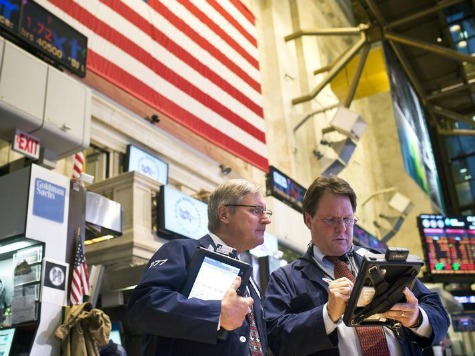
There are many ways to lose money or wealth as a result of inflation. For most Americans, the most obvious type of inflation is the steady increase in the cost of living caused by reckless monetary policies followed by the Federal Open Market Committee.
Instead of acting as an independent agency and protecting the value of the dollar, the FOMC has for the past several decades been an enabler for a dissolute and irresponsible Congress, expanding the supply of money to keep the Treasury and Congress from the day of reckoning when it comes to public spending.
Another way that inflation destroys value, however, is in the asset bubbles and financial market volatility caused by extreme swings in monetary policy, both by the Fed and other global central banks. After the 2011 terrorist attack in New York, the FOMC stepped on the monetary gas, dropped interest rates, and never looked back. The result was the largest asset bubble in human history – built atop some $60 trillion in bad securities that nearly destroyed the finances of the western world.
Notwithstanding this colossal error in judgment, after the 2007 financial meltdown the FOMC decided to drop interest rates even lower. And once again, the world is faced with financial bubbles of all descriptions. My friend Nouriel Roubini put the situation well in a recent article:
It is widely agreed that a series of collapsing housing-market bubbles triggered the global financial crisis of 2008-2009, along with the severe recession that followed. While the United States is the best-known case, a combination of lax regulation and supervision of banks and low policy interest rates fueled similar bubbles in the United Kingdom, Spain, Ireland, Iceland, and Dubai. Now, five years later, signs of frothiness, if not outright bubbles, are reappearing in housing markets in Switzerland, Sweden, Norway, Finland, France, Germany, Canada, Australia, New Zealand, and, back for an encore, the UK (well, London). In emerging markets, bubbles are appearing in Hong Kong, Singapore, China, and Israel, and in major urban centers in Turkey, India, Indonesia, and Brazil.
Now it will come as no surprise that the neo-Keynesian socialists who populate the FOMC do not accept the fact that their policies are causing yet another round of financial bubbles. “The objective here is to assure a strong and robust recovery so that we get back to full employment,” Yellen said. “Stock prices have risen pretty robustly,” she told the Senate Banking Committee, but she didn’t “see stock prices in territory that suggests bubble-like conditions.”
The trouble of course is that the Fed has been creating bubbles – tech bubbles, housing bubbles, and a continuing bubble in financial assets – for decades. So long, in fact, that the staff of the US central bank has lost the ability to really distinguish between real economic growth and the sort of financial engineering that has left the US economy in a terrible state – stagflation in classical economic terms. The New Yorker notes in a recent article by Kirk Kardashian that Jim Bruce, an LA based film maker, is making a movie called Money For Nothing: Inside the Federal Reserve. Says Bruce:
“My motivation for making the film is that I felt the Fed did not learn the correct lessons from the 2008 financial crisis. I think they thought too much about the crisis being the problem. A different way of thinking about it is all the behaviors leading up to the crisis were the problems.”
The basic problem with the Fed is not just the economic and monetary policies followed by the central bank, but the fact that the institution has lost its credibility and independence. Instead of raising interest rates and demanding that our dissolute government rein in massive deficits, the Fed has become the enabler. By packing the FOMC with compliant economists like Janet Yellen instead of truly independent citizens, the Fed has become a rubber stamp for the US Treasury.
Both the Congress and the Fed talk about ending subsidies for big banks, what we know as “too big to fail,” but the real problem in the US today is that the central bank is bailing out the US political class, members of both hideously corrupt institutional parties. The biggest bubble of them all is not in housing or on Wall Street or in more than a dozen major economies around the world, but in the US political system. Low interest rates care of the FOMC are not just pumping up false bubbles in house prices, stocks, or financial assets, but are also maintaining a thoroughly corrupt political system in the US that is now threatening the entire world with another round of financial catastrophe.
F.A. Hayek predicted precisely this outcome in his classic 1978 essay, “The Denationalization of Money.”
I do not think it an exaggeration to say that it is wholly impossible for a central bank subject to political control, or even exposed to serious political pressure, to regulate the quantity of money in a way conducive to a smoothly functioning market order. A good money, like good law, must operate without regard to the effects that decisions of the issuer will have on known groups or individuals. A benevolent dictator might conceivably disregard these effects; no democratic government dependent on a number of special interests can possibly do so. But to use the control of the supply of money as an instrument for achieving particular ends destroys the equilibrating operation of the price mechanism, which is required to maintain the continuing process of ordering the market that gives individuals a good chance of having their expectations fulfilled.

COMMENTS
Please let us know if you're having issues with commenting.